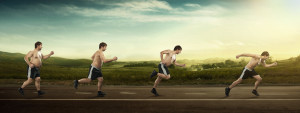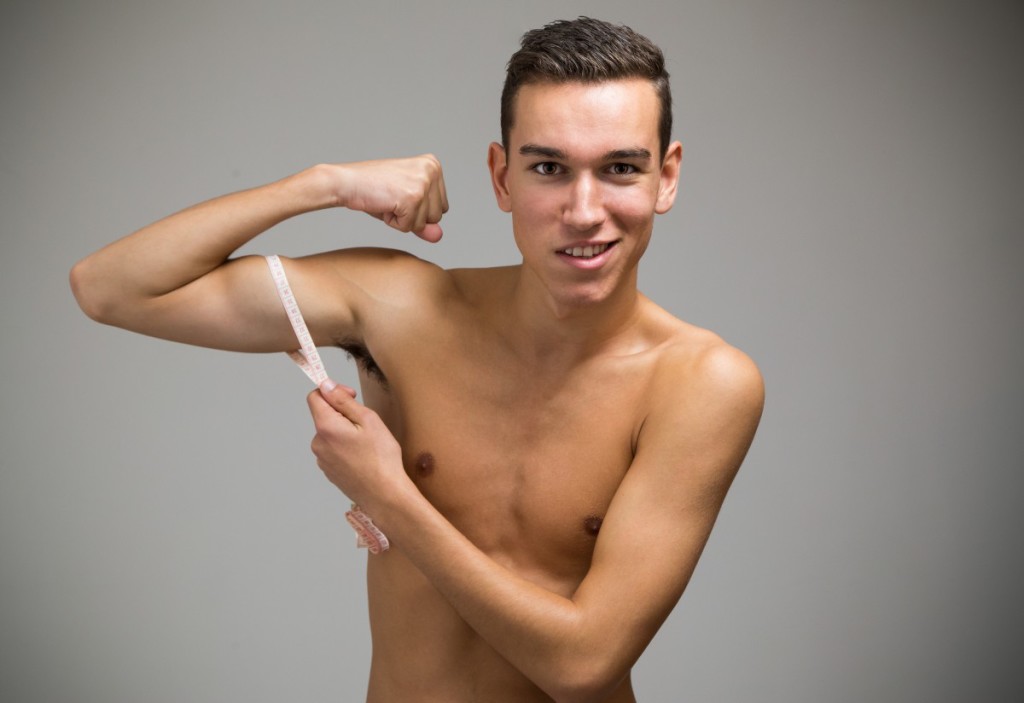
As a psychotherapist working with gay men in West Hollywood, body image and fitness issues come up more often than if I were practicing with another population in a different place. Our culture “suggests” – some would say vehemently “demands” – high levels of fitness in part for our health but largely for our looks.
While some decry this as “body Fascism” and put it in a negative light, I believe they are correct only to the extent that we must be mindful not to judge a person’s worth or derive our self-esteem solely from outward appearance, nor venture into the very painful world of Body Dysmorphic Disorder, Anorexia, or Bulimia. However, carefully and lovingly nurturing our bodies with good nutrition and regular exercise lays the foundation for good health well into our senior years, and can be an important component of a positive, even joyful self-image that celebrates the spiritual concept of the body as the “temple of the soul.” Though many of us want this, we also struggle to maintain our motivation for it. Perhaps the most important body part we have to exercise in approaching personal fitness is the brain – how we think about taking care of our physical selves.
First, stop criticizing yourself. Calling yourself “lazy” or “fat” doesn’t help. Good things happen when we relax, stop a minute, and consciously adopt a positive mindset. Start with the mantra that you are a fine, whole, complete, decent person, no matter your level of fitness or body weight. With this in place, you just “add on” a few fine details to life to spruce things up – like adding a fitness routine.
Next, like a Method actor, find your motivation – which comes from the Latin “movere”, meaning “to move”. To start, ask yourself, “Am I moving?” – Make your feet walk to the nearest gym or have your fingers call a friend to join you. Flip your thumb through Frontiers to find ads for a personal fitness trainer, or have your arms reach the top shelf of your closet for your running shoes! As the axiom in AA says, “When you move your feet, your mind will follow.”
What “moves” you emotionally to want better fitness? Is it the “carrot” – wanting to look good at the beach this summer, fit into favorite clothes, bring down your body weight or cholesterol count? Or is it the “stick” – avoiding the history of heart attacks in your family? Not wanting to have your dad’s pot belly? Managing HIV-related conditions? Being sick and tired of being sick and tired? Think about what you want that increased exercise might bring to your life.
I help my clients solve problems by identifying two things: the internal resources we need, and the external ones. Internal resources are things we can’t see, but evoke from deep inside of us. For enhancing motivation for fitness, internal resources might be patience, determination, commitment, confidence, resolve, discipline, excitement, joy, optimism, fortitude, and mental stamina. External resources might be the places (a gym to work out in, a street to run on, or a pool to swim in), the people (a trainer, a therapist/coach, or a workout partner), and things you touch or hold such as barbells, a jump rope, a tennis racquet, or things we wear like a bike helmet, running shoes, or swim goggles. When we put these resources together, we add one critical element – a time to do this — and we’re good to go. One of the most important elements in allowing exercise into our lives is simply scheduling regular times of the week to do it.
To sustain your efforts over time, make your fitness sessions a strong, written commitment on your appointment calendar or iPhone/Blackberry-style device. Make all other demands on your time accommodate your fitness, not the other way around. Barriers to exercise are many, such as being stuck in your head with negative thoughts about being too fat or too skinny to “be seen” in a gym, or outside factors such as having a demanding job with many hours.
To overcome these, apply the IDEAS model: 1) Identify your barriers. 2) Develop potential solutions to each; brainstorm options. 3) Evaluate the pros and cons of each option. 4) Act on your best/favorite solution. 5) Ask for emotional Support from your friends and colleagues on your goals, or enlist the help of professional resources like a fitness trainer and therapist who can help you maintain a positive mindset over time as you work toward your goals.
Avoid the temptation to give up too early. Document your progress by keeping notes on your body weight, measurements, or other objective means to evaluate your program. Challenge yourself to evoke a loving and nurturing patience with yourself, and appreciate even subtle or incremental gains, backed up by frequent positive self-talk and affirmations such as, “I am increasing my fitness level every day.” Look for ways that your commitment to improved fitness extends to other parts of your life, such as improved job performance, better social relationships, hotter sex, increased community involvement, and more appreciation of your unique talents and contributions that raise your self-esteem. Combined with working toward other personal goals, enhancing your personal fitness can raise your quality of life now, and for your future. Now…stop reading and go exercise!
If you would like support, via therapy or coaching, call/text my cell at 310-339-5778, or email Ken@GayTherapyLA.com. Would be happy to help you make progress in your goals!


